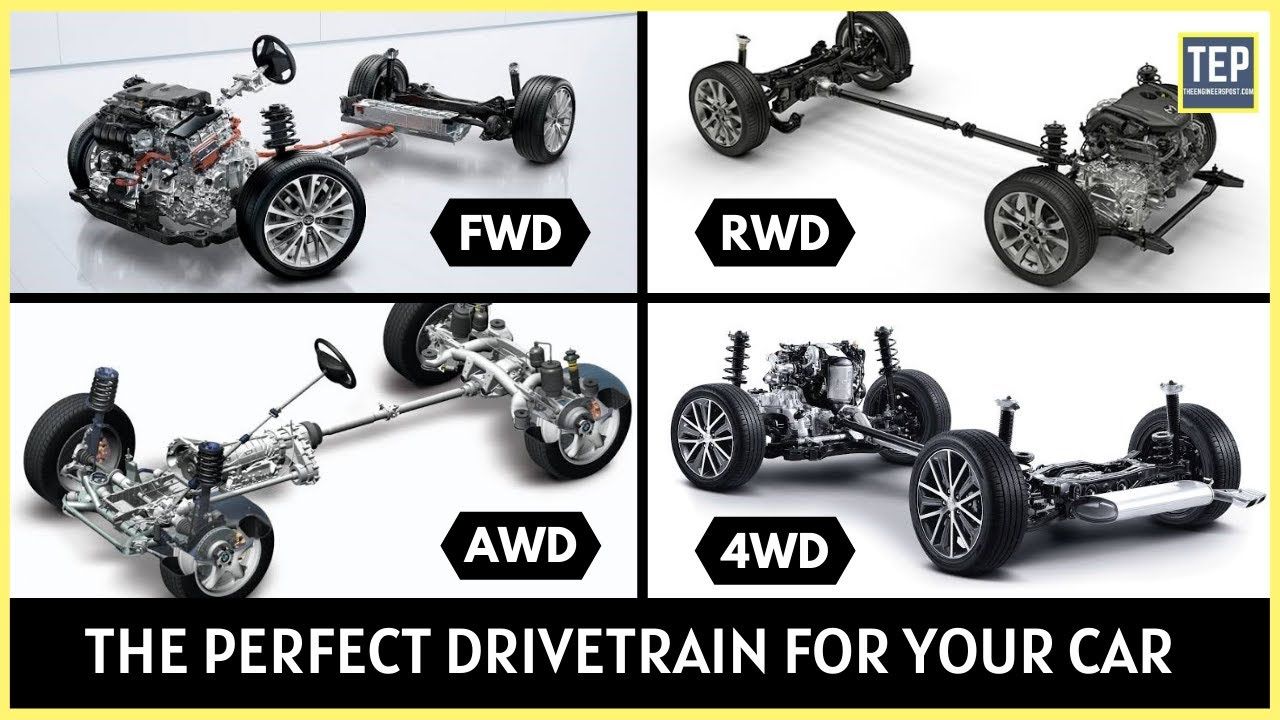What Does A 4x2 Car Mean

Alright, let's dive into the nitty-gritty of what a "4x2" car really means. You've probably heard the term thrown around, especially when discussing off-road capabilities, but understanding the details is crucial for diagnostics, modifications, and even basic maintenance. Consider this your comprehensive guide to unraveling the mystery of 4x2 drivetrains. We're speaking to experienced DIYers here, so we'll get technical, but I'll break it down so it's crystal clear.
Purpose: Decoding the Drivetrain
Knowing whether a vehicle is 4x2, 4x4, or AWD (All-Wheel Drive) is more than just bragging rights. It fundamentally impacts how power is delivered from the engine to the wheels. This knowledge is critical for:
- Repairs and Maintenance: Knowing the drivetrain configuration dictates which components you'll be working on, from differentials to driveshafts.
- Performance Modifications: Understanding the limitations and potential of a 4x2 system is vital before attempting any performance upgrades. You wouldn't want to install an aggressive off-road suspension on a vehicle that can't handle the terrain!
- Troubleshooting: Identifying drivetrain-related issues (e.g., unusual noises, vibrations) becomes much easier when you understand the power flow.
- Informed Purchasing: Deciding between a 4x2 and a 4x4 vehicle hinges on your specific needs and driving conditions.
Key Specs and Main Parts of a 4x2 System
A 4x2 vehicle, quite simply, means that only two of its four wheels receive power from the engine. The "4" refers to the total number of wheels on the vehicle, and the "2" indicates the number of driven wheels. Generally, a 4x2 vehicle will have either:
- RWD (Rear-Wheel Drive): Power is sent to the rear wheels. This is common in trucks, sports cars, and some older sedans.
- FWD (Front-Wheel Drive): Power is sent to the front wheels. This is the most common configuration for modern passenger cars due to its efficiency and packaging advantages.
Let's break down the main components for both RWD and FWD 4x2 systems:
RWD (Rear-Wheel Drive)
- Engine: Generates the power.
- Transmission: Multiplies engine torque and sends it to the driveshaft. A *manual transmission* allows the driver to manually select gears, while an *automatic transmission* does so automatically.
- Driveshaft: A rotating shaft that transmits power from the transmission to the rear axle.
- Rear Axle/Differential: This unit splits the power between the rear wheels, allowing them to rotate at different speeds when cornering. The differential is a crucial component with gears that enable this speed difference.
- Axle Shafts: Connect the differential to the rear wheels.
FWD (Front-Wheel Drive)
- Engine: Generates the power.
- Transaxle: A combination of the transmission and differential, housed in a single unit.
- Drive Axles (Half-Shafts): Connect the transaxle to the front wheels. These axles need to accommodate steering, so they include constant-velocity (CV) joints that allow for articulation.
How It Works: The Power Flow
Understanding how power flows through a 4x2 system is essential for diagnosis. Here's a simplified overview:
- Engine Generates Power: Combustion in the engine cylinders creates rotational energy.
- Power Enters the Transmission/Transaxle: The transmission/transaxle manages the engine's torque and speed, sending it towards the driven wheels. The gear selection determines the torque multiplication and thus the vehicle's acceleration and speed.
- Power is Transmitted:
- RWD: Through the driveshaft to the rear differential. The differential then distributes power to the rear axle shafts, turning the rear wheels.
- FWD: Directly from the transaxle to the front drive axles (half-shafts), which turn the front wheels.
Differential action is critical. Without a differential, turning would be impossible, as the inner wheel would need to travel the same distance as the outer wheel during a turn – causing binding and potential damage.
Real-World Use: Basic Troubleshooting Tips
Here are a few basic troubleshooting tips for 4x2 systems:
- RWD: Vibration at High Speed: Could indicate a bent driveshaft or worn u-joints (universal joints) on the driveshaft.
- FWD: Clicking Noise While Turning: A common sign of a failing CV joint. These joints are crucial for transmitting power while allowing the wheels to steer.
- Both RWD & FWD: Difficulty Shifting: Could indicate problems with the transmission, clutch (in manual transmissions), or shift linkage.
- Both RWD & FWD: Wheel Spin on Acceleration: This is normal under slippery conditions, but excessive wheel spin in dry conditions could indicate a worn-out differential (especially in RWD).
Safety: Proceed with Caution
Working on drivetrain components can be risky, especially the differential and transmission. These components are heavy and contain fluids that can be harmful. Always take the following precautions:
- Support the Vehicle Properly: Use jack stands on a level surface. Never work under a vehicle supported only by a jack.
- Disconnect the Battery: Prevents accidental starting of the engine.
- Wear Safety Glasses: Protect your eyes from debris and fluids.
- Use Proper Tools: Using the correct tools is crucial to avoid damaging components and injuring yourself.
- Refer to the Service Manual: Follow the manufacturer's instructions for disassembly and reassembly. Torque specifications are critical.
Never attempt to work on the differential or transmission unless you are comfortable with intricate mechanical components. Improper disassembly or reassembly can lead to serious damage and potentially dangerous situations.
Conclusion
Understanding the ins and outs of a 4x2 drivetrain is a valuable skill for any car enthusiast or DIY mechanic. Knowing how power flows, identifying key components, and recognizing common issues can save you time, money, and potential headaches down the road. Remember to always prioritize safety and consult the service manual for your specific vehicle.
